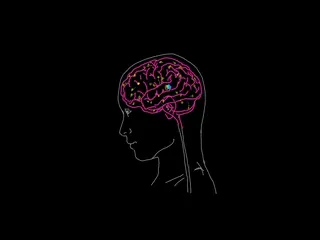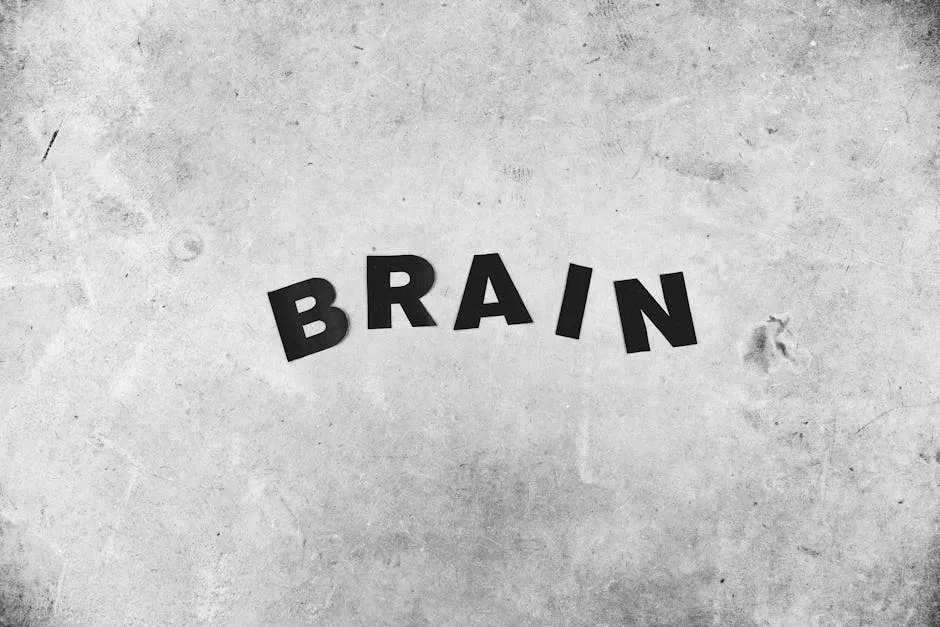
Why Do Some People Have Photographic Memories?
Introduction
Photographic memory often sparks curiosity and debate. Many people think it means recalling everything perfectly. However, this isn’t entirely accurate. The term refers to various memory types, primarily eidetic memory.
Eidetic memory allows individuals to visualize images with high accuracy after just a brief observation. While not everyone possesses this ability, it highlights the fascinating nature of human memory.
Exploring photographic memory is essential in psychology and neuroscience. It can help us understand how memory functions and why some individuals excel in specific memory tasks. The allure of photographic memory lies in its rarity and the potential it hints at within our brains.
If you’re eager to improve your memory, why not start with a great resource? Grab a copy of a Memory Improvement Book that can provide you with techniques and tips to enhance your recall abilities!

Understanding Photographic Memory
Definition of Photographic Memory
Photographic memory is the ability to recall visual information with exceptional detail after brief exposure. Often confused with eidetic memory, photographic memory implies a more persistent recall of images. While scientific literature discusses these concepts extensively, true photographic memory remains unproven.
Eidetic memory, on the other hand, is a short-lived phenomenon. Children commonly exhibit it, often retaining vivid images for seconds to minutes after removal. Research indicates that about 2 to 10 percent of children may demonstrate eidetic memory. This phenomenon typically fades with age as other cognitive skills develop.
Eidetic Memory vs. Photographic Memory
The distinction between eidetic and photographic memory is crucial. Eidetic memory is characterized by the ability to recall images with clarity immediately after seeing them. In contrast, photographic memory suggests a more ingrained ability to retrieve detailed information over time.
Scientific skepticism surrounds photographic memory. Many experts believe it is more of a myth than a reality. Studies indicate that exceptional memory often results from cognitive strategies rather than innate abilities. For instance, mnemonists, who excel in memory competitions, frequently employ techniques like visualization and association.
While some rare individuals claim to possess eidetic memory, the scientific community has yet to validate these claims universally. These distinctions underscore the complexity of human memory and the ongoing quest to understand it better.
In conclusion, while the idea of photographic memory captivates us, understanding its nuances is vital in grasping the broader picture of memory capabilities. If you want to dive deeper into memory techniques, consider checking out “Moonwalking with Einstein” by Joshua Foer, a fascinating read that explores the world of memory champions!

The Science Behind Memory
Memory Types and Mechanisms
Memory is a fascinating process that breaks down into several categories. Short-term memory holds information temporarily, like a mental notepad. Long-term memory, on the other hand, retains information for extended periods, allowing us to recall our childhood memories or the names of our favorite songs. Working memory acts as a mental workspace, helping us manipulate and process information in real-time.
Now, where do photographic and eidetic memories fit in? Photographic memory, often romanticized in movies, implies an ability to recall images in extreme detail after a brief glance. In contrast, eidetic memory allows individuals to visualize an image vividly for a short period after seeing it. While photographic memory tends to be a more persistent recall of information, true examples remain elusive. Most of us exhibit varying abilities across these memory types, often influenced by practice and techniques.
To sharpen your memory skills, try engaging with Visual Memory Training Cards. They can help you practice and enhance your visual recall abilities!

Neuroscience of Memory
The brain plays a pivotal role in memory formation and retrieval. Key structures involved include the hippocampus and amygdala. The hippocampus is crucial for forming new memories, while the amygdala processes emotions linked to those memories. Together, they create a rich tapestry of our experiences.
Biological factors also impact memory. For instance, variations in brain structure can lead to enhanced memory capabilities. Some researchers suggest that individuals with extraordinary memory have unique neural connections that facilitate better information retention. These connections may be influenced by both genetics and environmental factors, shaping how we encode and recall memories.
If you’re looking for ways to boost your memory further, consider using a Mind Mapping Notebook. It’s a fantastic tool for organizing thoughts and visualizing connections between ideas!

Genetic Factors
Genetics may also play a role in memory abilities. Studies show that individuals can inherit traits that enhance their memory processing capabilities. For example, some families exhibit a pattern of exceptional memory skills, hinting at a hereditary component.
Research continues to explore these genetic influences. For instance, certain gene variations may affect synaptic plasticity—the brain’s ability to strengthen or weaken connections based on experience. This adaptability could explain why some individuals excel in memory tasks, while others struggle. Understanding these genetic factors opens a window into the complexities of human memory, offering insights into both the ordinary and extraordinary capabilities of our minds.

Reasons Some People May Have Photographic Memories
Cognitive Strategies and Training
Some individuals boast extraordinary memory skills, and guess what? They didn’t just wake up one day with superhuman abilities. Nope! They often employ specific techniques to boost their memory. Let’s talk about mnemonics and visualization.
Mnemonics are nifty memory aids. Think of them as your brain’s personal GPS, guiding you through the maze of information. For instance, the classic “Every Good Boy Deserves Fudge” helps music students remember the lines of the treble clef. Simple, yet effective!
Visualization is another powerful tool. Imagine turning information into vivid images. A trained mnemonist might visualize a shopping list as a colorful parade of groceries dancing down the street. This technique can help solidify memories by creating strong mental connections.
One famous example is Dominic O’Brien. He’s won the World Memory Championships multiple times. His secret? He uses a method called the “Dominic System,” where he assigns numbers to people, transforming them into memorable characters. O’Brien’s ability to memorize the order of a shuffled deck of cards in mere minutes exemplifies how training can lead to remarkable memory feats.
So, while some might think photographic memory is an innate trait, it’s often the result of practice and clever strategies. Anyone can develop strong memory skills with the right techniques! If you’re interested in learning more, check out “The Memory Book” by Harry Lorayne, a classic guide to improving your memory!

Psychological Factors
Now, let’s dive into the psychological factors that play a significant role in memory retention. Attention, motivation, and interest can make a world of difference in how well we remember things.
When we’re genuinely interested in a topic, our brains engage more actively. Have you ever noticed how you can recall every detail from a riveting novel? That’s motivation at work! In contrast, information presented in a boring lecture might slip through your fingers like sand.
Studies show that focused attention enhances memory retention. One experiment found that participants who were highly engaged remembered significantly more information than those who were distracted. It’s as if our brains are little sponges, soaking up what we find important.
Anecdotal evidence supports this too! Consider the story of Kim Peek, the savant who inspired the film “Rain Man.” Peek could recall vast amounts of information, from dates to entire books. His intense passion for learning fueled his remarkable abilities.
In short, when we’re motivated and attentive, our memories sharpen. So, the next time you find yourself daydreaming during a lecture, remember: a little interest can go a long way! If you’re seeking a fun way to sharpen your mind, try out some Memory Games for Adults!

Exceptional Cases and Anecdotes
Throughout history, a handful of individuals have been claimed to possess photographic memory. While many of these tales are legendary, they certainly capture the imagination! Let’s take a look at a few fascinating examples.
First, we have Stephen Wiltshire, a British savant artist. He can draw detailed cityscapes from memory after only a brief helicopter ride. His talent is jaw-dropping! Wiltshire’s ability to recreate entire skylines showcases the incredible potential of the human brain.
Then there’s Kim Peek, who could read a book in minutes and recall it later with astonishing detail. Despite having a developmental disability, Peek’s memory skills were nothing short of extraordinary. His life story has inspired many, proving that even those with challenges can achieve greatness.
Another remarkable case is that of the late Solomon Shereshevsky, a Russian journalist. Shereshevsky possessed an exceptional memory, recalling numbers, words, and even entire poems. However, his ability came with a twist; he struggled with everyday tasks, showing the complexities of extraordinary memory.
While these stories are compelling, it’s essential to note that they often involve a mix of cognitive training and unique neurological wiring. These exceptional individuals remind us of the incredible capabilities hidden within our minds.
In conclusion, while some people may appear to have photographic memories, their abilities often stem from a combination of cognitive strategies, psychological factors, and extraordinary circumstances. Whether it’s through diligent training or sheer passion, anyone can enhance their memory!

Perspectives on Memory
Expert Opinions
The existence of photographic memory remains a hot topic among psychologists and neuroscientists. Some experts, like Barry Gordon, argue that while the intuitive notion of a “photographic” memory exists, true photographic memory has never been scientifically proven. Gordon suggests that most people possess varying degrees of exceptional memory, particularly for visual information, but not in the flawless manner often romanticized in popular culture.
On the other hand, professionals like Shulamit Widawsky express skepticism, noting that what people label as photographic memory may stem from other memory types, such as auditory or kinesthetic memory. They emphasize that individuals excel in specific memory domains rather than possessing a universal recall ability. In contrast, researchers like Ashwin Sudhakar acknowledge the phenomenon of eidetic memory, highlighting how it allows for detailed visual recall shortly after experiencing an image. This ability, however, is rare and is not synonymous with photographic memory.
Philosophical perspectives, such as those from Radjindrababou Ramassamy, propose that memory capabilities could be influenced by spiritual or mystical elements. This viewpoint adds a layer of complexity to the debate, reflecting how societal beliefs shape our understanding of memory. Paul Price, another expert, believes that while true photographic memory may not exist, many individuals can significantly enhance their memory skills through training and practice.
Discussions continue to highlight the nuances surrounding memory. For instance, Vikrant Mahajan shares insights from personal experiences, indicating that certain people may demonstrate remarkable memory abilities under specific conditions, challenging the idea of a one-size-fits-all explanation.

Cultural and Societal Beliefs
Cultural narratives play a pivotal role in shaping our beliefs about memory capabilities. Myths surrounding photographic memory often lead to unrealistic expectations about human memory. For example, many people grow up believing that some individuals can effortlessly recall vast amounts of information, leading to misconceptions about what is achievable.
These beliefs can have profound implications, particularly in educational settings. Students who believe they lack photographic memory may feel discouraged or inferior when compared to peers. This can affect their self-perception and willingness to engage in learning. Additionally, media portrayals of characters with extraordinary memory reinforce the idea that such abilities are rare and almost superhuman.
Furthermore, the implications extend into everyday life, where individuals may underestimate their memory potential. The societal pressure to possess “perfect” recall can lead to frustration and anxiety. In reality, memory is not solely about innate abilities but also about techniques and strategies that anyone can learn. Recognizing that memory can be trained and improved is crucial for fostering a growth mindset.
As society continues to evolve, understanding the balance between cultural myths and scientific realities becomes essential. By promoting realistic views on memory, we can encourage individuals to explore their capabilities without the burden of unrealistic expectations. Ultimately, a nuanced understanding of memory can empower people to embrace their unique strengths and adopt effective strategies for enhancing their recall abilities.

The Limitations of Photographic Memory
Memory Fallibility
Memory is often misconceived as a perfect recording device, but in reality, it is reconstructive, not reproductive. This means that when we recall memories, we are piecing together fragments of information rather than accessing a pristine snapshot. The brain fills in gaps, leading to potential distortions.
Many believe that photographic memory implies infallibility. However, this notion is misleading. Even those with exceptional memory capabilities experience inaccuracies. Studies have shown that memories can be influenced by various factors, including emotions, context, and subsequent experiences. For instance, eyewitness testimonies, often considered authoritative, can be unreliable due to the malleable nature of memory.
The belief in perfect recall can lead to frustrating experiences. Many individuals assume that if they can’t remember something precisely, they lack photographic memory. This misconception can create unnecessary pressure, causing anxiety and self-doubt.
Furthermore, the idea that photographic memory exists as a distinct ability can overshadow the incredible variability in human memory. People remember different types of information well based on their interests and experiences. For instance, a history buff may recall dates and events with remarkable clarity, while a music lover might easily remember lyrics and melodies.
Understanding memory’s reconstructive nature can foster a healthier perspective. Instead of striving for perfection, we can focus on enhancing our memory skills through techniques like visualization, repetition, and association. Embracing the fallibility of memory allows us to appreciate its complexities while recognizing that everyone has the potential to improve their recall abilities. And if you’re looking for some fun ways to do that, consider a Brain Training Puzzle to challenge your mind!

Challenges Faced by Individuals with Exceptional Memory
Having an exceptional memory might sound like a superpower, but hold on—it’s not all rainbows and butterflies. Individuals with extraordinary memory capabilities, such as those claiming photographic memory, face unique challenges.
First off, the emotional burden can be quite significant. Imagine being unable to forget a painful memory. For those with exceptional recall, it can feel like an endless loop of vivid experiences—both good and bad. Emotional memories can haunt them, making it tough to move on from past traumas.
Moreover, filtering out irrelevant information poses another challenge. Picture this: you’re trying to enjoy a conversation, but your mind is bombarded with every detail from the room around you—the color of the wallpaper, the smell of coffee, the sound of a clock ticking. It can be overwhelming!
This sensory overload can lead to increased anxiety and distractibility. Instead of focusing on the present moment, individuals might find it hard to sift through all the noise. It’s like trying to find a needle in a haystack when every piece of straw is shouting, “Look at me!”
In summary, while exceptional memory skills can be impressive, they come with emotional and cognitive challenges that are often overlooked. It’s essential to recognize that every superpower has its kryptonite! And speaking of which, if you want to explore more about memory techniques, consider picking up a Visualization Techniques Guide that can help you master memory retention!

FAQs
Does photographic memory actually exist?
The scientific community remains divided on the existence of photographic memory. While many believe it to be a myth, some individuals report exceptional memory abilities. Studies suggest that what is often labeled as photographic memory might stem from enhanced visual memory or cognitive strategies rather than a distinct memory type.
Can memory be improved?
Absolutely! Memory can be enhanced through various techniques. Mnemonics, visualization, and repetition are effective methods. Engaging in cognitive exercises and maintaining a healthy lifestyle—such as regular physical activity and a balanced diet—also play essential roles in boosting memory skills.
What is the difference between eidetic and photographic memory?
Eidetic memory refers to the ability to vividly recall images shortly after seeing them, primarily seen in children. In contrast, photographic memory suggests a long-lasting ability to retain detailed information over time. However, true photographic memory has never been scientifically validated.
Are there known cases of individuals with photographic memory?
While many individuals have claimed to possess photographic memory, verifiable cases are rare. Notable figures often cited include Stephen Wiltshire, who can draw detailed cityscapes from memory, and Kim Peek, known for his incredible recall of facts and figures. However, skepticism surrounds these claims, emphasizing the need for further research.
How do genetics influence memory capabilities?
Genetics may play a role in memory abilities, with certain traits potentially inherited. Research suggests that variations in brain structure and function can influence how individuals process and retain information. However, the interaction between genetics and environmental factors remains an area of ongoing study.
Please let us know what you think about our content by leaving a comment down below!
Thank you for reading till here 🙂 And if you’re interested in some creative outlets to relax and boost your memory, consider trying a Stress Relief Coloring Book or a Meditation Cushion to help you unwind!
All images from Pexels




